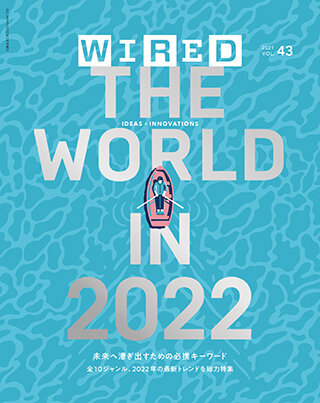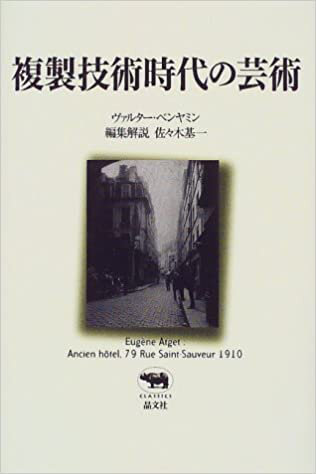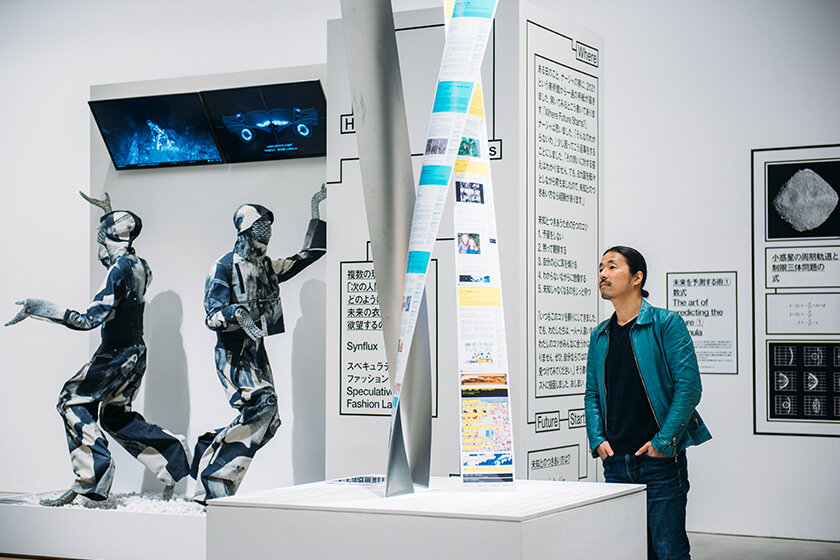
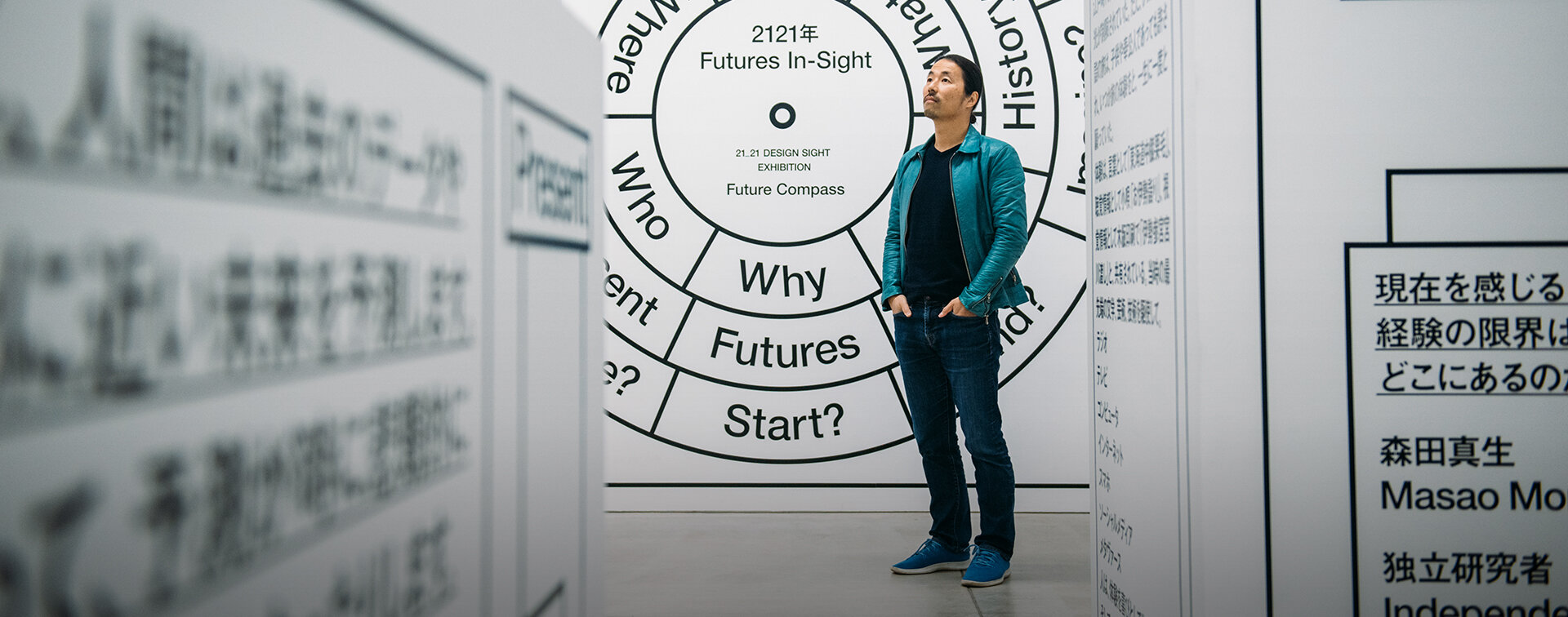

INTERVIEW
133
Michiaki MatsushimaEditor
Roppongi and its Overlapping Maps as a Testing Ground for Future Cities
Experiencing a digital city like people experience streamed music
Imagining the future is, essentially, something that everyone does on a daily basis and the Roppongi Future Conference has talked about the future from every perspective, so why is it that when the topic of "the world 100 years from now" is raised, things soon start to get blurry? As the editor of the Japanese edition of WIRED — a media publication that implements the future — Michiaki Matsushima presents questions that take a variety of forms about what the future will be like as it evolves through technology. Using the wealth of knowledge and experience that he possesses, he has taken on the role of director of the 2121 Futures In-Sight exhibition that is currently underway at 21_21 DESIGN SIGHT, and here he talks about going back to the basics of what it means to think about the future.
Thinking about what it means to think about the future.
Throughout 2020 and 2021, the pandemic has made it impossible to predict how things will be in one month's time, let alone 100 years in the future, and I think we can say that in this time, everyone has experienced for themselves the potential of thinking about the future. When you mention an exhibition about the future, the conversation tends to go towards what things will be like in 50 or 100 years from now, but the 2121 Futures In-Sight Exhibition does not contain any specific content about the world in the future. Instead, one of its main themes is to offer perspectives from which to consider and gain an insight into what it means to think about the future.
2121 Futures In-Sight Exhibition
The name 21_21 DESIGN SIGHT contains the same numbers as the year 2121, which is exactly 100 years from 2021 —the year in which the exhibition started. As well as imagining the future, this exhibition involves visualizing the perspectives on the future contained in our behavior and the things we make as we live through the present along with a variety of participants that include designers, artists, thinkers, engineers, researchers, and companies. The exhibition runs until May 8 (Sun), 2022 in 21_21 DESIGN SIGHT Gallery 1 and 2.
When I was considering the content of the exhibition in the initial stages an idea for a time capsule came up, but in the times we are in we don't have to make any effort to leave things like a time capsule behind for future generations because a wide variety of information gets left behind digitally. For example, we are almost certainly living in a world where our grandchilren's grandchildren will be able to look at something we ourselves tweeted, and say "this is what my ancestors said." I think it's fair to say that most people do not consciously think about what it means to leave digital relics behind, but it might be interesting to consider what is possible and not possible with a time capsule in the age we are entering where nothing is ever forgotten.
However, it's not as if the future will definitely follow a linear path in its development whereby things develop as they are now for ten or twenty years, giving us a predictable future 10 or 20 years down the road; there is a high likelihood that we will go through a repeated process of intermittently occurring periods of rapid change and stagnation — something I often refer to as a nonconsecutive future. But just how possible is it to consider a nonconsecutive future 100 years from now? I would like this exhibition to take a thorough head-on look at the meaning that the actual act of thinking about the future has.
Is the stage of imagining the future already behind us!?
When WIRED interviewed the science fiction writer William Gibson during the Covid-19 pandemic, he asked why it was that humankind is unable to envisage the 22nd century, and this question forms a reference point for this exhibition. Whether the predictions turned out to be correct or incorrect, the 21st century was certainly envisioned in the 20th century, however imperfectly, but it is somewhat difficult to envision the 22nd century.
WIRED
WIRED was founded in San Francisco in 1993 as a tech-culture media company, and expanded into North America, Europe, Asia, and the Middle East. Having started out as a magazine, WIRED continues to push its potential as a media company into areas that include the web and social media, e-books, and real-world events in response to the multilayered nature of society. The most recent issue of the Japanese edition is titled "The World In 2022", and looks at the prospects for the year 2022.
I think that Mr. Gibson's question gives us two things to think about. One is that it takes a negative view of us being unable to set out and share a sharp vision for the 22nd century, but it poses the question of whether the actual stage in which it is possible to have a grand vision of the future for everyone to share is now behind us. If we consider that there is no vision for the 22nd that anyone can picture and that each person has their own sort of vision and some kind of idea for how to start advancing toward it, then I think there is also room for this to be viewed in a positive way. We are using the word "future" in the plural form in the title Futures In-Sight to reflect the hope that together we will be able to envision multiple versions of the future, and I would like to see the exhibition update the meaning of the future in a positive way.

The real "Information Age" starts here.
If history books are still around in the 22nd century, I think they will say something like the Covid-19 pandemic generation was when humanity finally got to grips with and mastered the internet. The internet was commercialized around 1995 or 1996, and with WIRED being established just beforehand in 1993 we see ourselves as being a media company that has grown up alongside the internet, yet when viewed from 100 years in the future, it might seem as if nothing much happened between those beginnings and where we are now. I truly feel that the real changes are going to happen going forward from here.
The expression "Information Age" has been overused, and everyone may think that it has finished, but it is from now that the Information Age will start in both name and substance. And the way I envision it, what this means is that it may well be 2121 before we see a slightly clearer outline of what a world connected by the internet or networks as envisioned since the nineties will actually look like.
When looking at the times we live in from a point even further in the future, the further away you go the more clearly the major generational changes will stand out. There are several theories about the way writing came to Japan, but it is said to have arrived between the sixth and seventh centuries, meaning that there is no written information available from prior to this. That means the only way to reveal the kind of lives that people lived back then is to use artifacts that have been dug up out of the ground, and things like that.
In the period just after written information came into existence, most of the things written were about the emperor, but eventually things started to be written about daily life, and with the appearance of essays like Makura no Sōshi (The Pillow Book — a book of observations and musings recorded by a court lady to a Japanese empress from the year 1002) it became possible to understand the way that women lived, among other things. It is easy to see that the amount of information available after writing was introduced compared to before this event happened is on a completely different scale, and I think something similar years that will form a historical turning point has been happening over the past 20. So, it might well be the case that people 1,000 years from now look back and say "the only things left from before the year 2,000 are concrete and an extremely limited amount of information so we have no idea about how they lived" [laughs]. From a perspective that far in the future, the times we are currently living in might be a major turning point in history.
Thinking by using both forecasting and backcasting.
There are many ways of thinking about how things will pan out in the future, as you'd expect. When putting this exhibition together I went through them, and the simplest ones are forecasting and backcasting. With forecasting, you take now as your starting point and think about what things will be like in 10 years, and from there you think about what things will be like in 20 years and so forth. It is a way of imagining the future as an extension of the present. With backcasting, you first picture a possible future or a future that you hope to see, and then work backwards from there. So, for example, you might start with the premise of there being no biological gender difference between men and women in the year 2121, and then say well if that is the case, it would be odd if DNA modification wasn't accepted by society around the year 2050. You gradually return like this until you get to a point in the near future, and then think about what we have to do now to reach it.
What projects at the WIRED Sci-Fi Prototyping Lab and other organizations have shown us is that when companies in particular consider things such as a five-year plan or a ten-year plan, they always use forecasting. I think that this itself is a good thing, and that is because you can't make something a reality if you can't imagine it, and coming up with a specific image of the future as a linear extension of the present before taking action to make it a reality is something that humanity has repeated throughout history.
WIRED Sci-Fi Prototyping Lab
This is a project that leverages the bold and sophisticated imaginative powers of science fiction writers to envision the future of industry and companies, and provide full and comprehensive support for its implementation and business development. The project is a collaboration between WIRED Japan and PARTY as led by Naoki Ito, who is also WIRED Japan's creative director.
However, a future depicted using forecasting is nothing more than a linear extension of the present, so forecasting cannot be used to make predictions about an intermittent future. Thus, there are some things that we can only see when we take a step back from the reality before our eyes and think about the far future by exercising the science fiction part of our imagination. Drones, androids, and sending rockets to Mars have all been depicted in the realms of science fiction, and have all eventually been implemented after first being decided upon as a kind of direction for reality. Backcasting sometimes enables us to imagine a future that we hadn't considered before, and this sometimes forms the starting point that leads to new creations. This is why I think it's very interesting and effective to think 50 or 100 years ahead into the very far and unknown future.
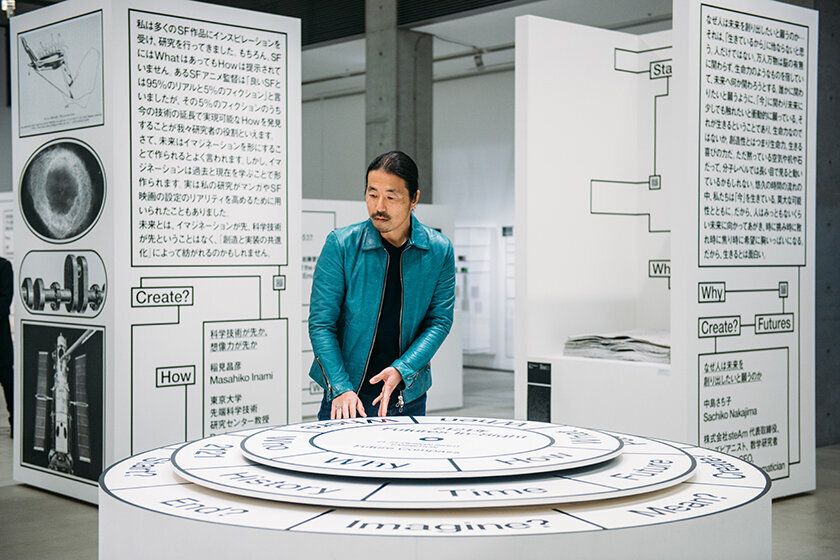
The concrete-covered city as a rich ecosystem.
An urban initiative that gives you a feeling for the future is the "Synecoculture" approach to agricultural advocated by Masatoshi Funahashi from Sony CSL (Sony Computer Science Laboratories) — which is also participating in 2121 Futures In-Sight — on the basis the "augmented ecosystems" concept. WIRED has also recently published articles about cities holding the key to ecosystem preservation and biodiversity, and Masatoshi Funahashi is undertaking an experimental trial on the roof of Roppongi Hills with a focus on the extent to which a rich ecosystem can be created in a city. A range of animals including raccoon dogs and common racoons can be spotted in the Tokyo metropolitan area, and similar things happen in cities around the world. Cities actually have places that stay light into the night while also having places that are dark all day, places where strong winds blow, places with plentiful sunlight, and other such places, giving them a very diverse variety of habitats and environments.
Synecoculture
This is an experimental trial of a unique approach to agricultural that is being carried out by Sony Computer Science Laboratories on the basis of a blueprint by Takashi Otsuka of Sakura Shizen Juku Co., Ltd., and it involves the cultivation of more than 100 varieties of vegetables and fruit trees in mixed and dense growth without fertilizers or pesticides and with the goal of producing food and restoring and enhancing biodiversity. This experimental trial was commenced on the roof of Roppongi Hills in 2019 with the aim of implementing a cyclical ecosystem network in an urban area.
https://www.sonycsl.co.jp/press/prs20191029/
While we have seen a diffusion of people into provincial areas for reasons including the increase in remote working due to the Covid-19 pandemic, on the other hand it is said that by the year 2060 there will be six billion people around the world living in urban areas. But if you take the view that people either have to gather in a city or live in the countryside as a false dichotomy and define cities themselves as environments that have the most abundant nature, then these two trends take on a different meaning. In addition to preserving the nature we have now, wouldn't it also be interesting if there was a shift in value whereby concrete-covered cities were viewed as an ecosystem and ecosystems became more abundant through urbanization?
The form of real cities as redefined by reproduction.
For most of the past two decades, we have lived in a world with smartphones, and from the perspective of future generations, this can be called an unusual period in history. Walking around a city while staring into your smartphone is actually very hazardous [laughs], and while I am still not sure whether smartphones will be replaced with smart glasses or some other wearable device, going forward I think that the everyday actions we perform these days while looking at our smartphones will become more experiential when information is overlaid on a city.
On a larger scale, I think that we'll see the commodification of spaces due to the digitalization of a range of information pertaining to cities. What I am referring to here is a substantial qualitative change whereby spaces that are currently only in one location in the world will become places that are infinitely accessible. Looking at what we have seen so far, when text and images were digitalized it became possible to copy and paste them, search for and share them, and cut up and rearrange them. And from now it is cities that will be searched for, shared, and copied, and humanity will learn what the significance of this is going forward.
85 years ago, Walter Benjamin wrote a book called The Work of Art In the Age of Mechanical Reproduction. In those days, the only people who could enjoy music, a play, or other such performances were royalty and the aristocracy, and these are the things that were considered to be art. Sounds played back from a record on a gramophone were not thought of as real music. The same went for movies, and people discussed whether something that did not involve real humans performing on a stage before one's eyes was artistic in nature. That is to say, in those days there was a cultural discussion taking place about how to perceive reproduction technology.
The Work of Art In the Age of Mechanical Reproduction
This is an essay that was published in 1936 by German cultural critic Walter Benjamin. In his view, reproduction technology for photographs, movies, and other such things would end up with traditional art works losing their aura (the authenticity and authority connecting an original work of art to the here and now that it gains through its one-time nature). In the book he discusses the change in the relationship between art and people.
In our times, nobody thinks that what they are listening to on a streaming service isn't music, we cry when we watch movies, and these things occasionally deliver an experience powerful enough to be lifechanging. While the value of real experience continually climbs, nobody deems things produced with reproduction technology to be fake. And what we are going to see going forward is the reproduction of cities. For example, if a digital twin of 21_21 DESIGN SIGHT was to be created, 50 million people from around the world would be able to visit it at the same time. So as commodification progresses, experiences that currently can only be had by coming to Japan and visiting 21_21 DESIGN SIGHT will be available to a lot more people.
With the same kind of sensation as when listening to streaming music, anyone around the world will be free to experience their favorite cities. It is entirely possible that, for example, a 10-year-old from South Africa could spend every day immersed in a digital twin of Roppongi. At first, we will likely deem this not to be a real experience, but as cities open up in this way and become commodified, the form that real cities take will come to be redefined. I think that what we may be seeing in our current circumstances is that The Work of Art In the Age of Mechanical Reproduction has finally come to cities.
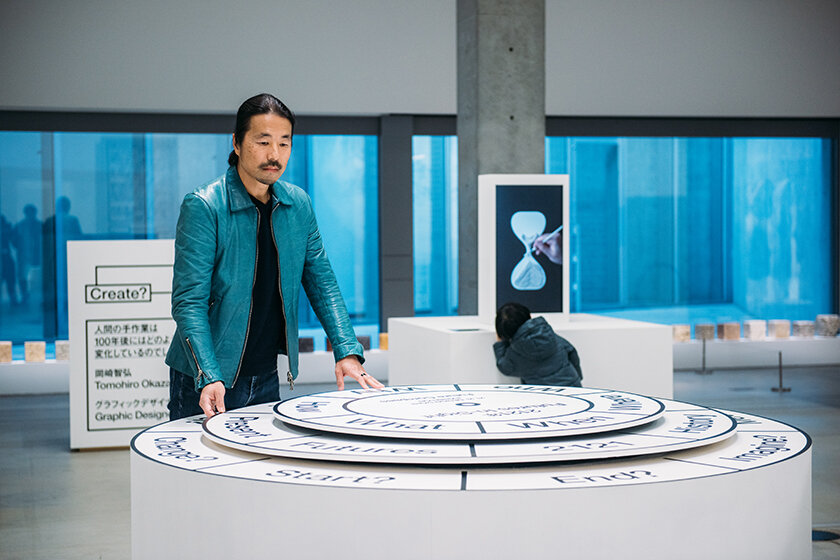
The difference from the present becomes the future.
In order to foster the insight required to consider things in the future, what I recommend is to read books. This is because no one reads books, or so I often say in a half self-deprecating way [laughs]. This is to some extent true, and if you just read what everyone reads and watch the same news then you will only be able to see the same future as everyone else. If you just consume the same information as the person next to you, there will be no difference.
It is possible to consider that what we have always meant when we talk about the future is a "difference". Basically put, what this means is that if 100 years pass and still nothing has changed then we haven't reached the future, but if there is a massive difference between now and only one minute from now then we can consider this to be the future. On this premise, considering how to create this difference and how to identify difference provides an insight into the future, so to do this it can be argued that it is beneficial to read books that no one else has read and books that look like no one would read them. Because there is a massive abundance of information these days, we have to confront long reads or texts that set out a single idea with a certain degree of determination and imagination. I think that using time in this way nurtures insight.
We should keep thinking about the future for our whole life.
Before the Covid-19 pandemic there were a lot of non-Japanese people in Roppongi. My wife is British and worked at Roppongi Hills for about 10 years, but she and other non-Japanese people have completely different maps of Roppongi in their heads to the ones we do. In this place we all know as Roppongi they have their own cultural sphere; they have their own regular bars and restaurants and places they meet their friends, and other such places. They see a completely different place to the one that we who were born in Tokyo and are familiar with Roppongi do. The multilayer nature of these things that could be called maps was something people just had prior to VR and AR becoming everyday things, but it is particularly prominent in Roppongi, and I feel that in Japan this was the only global-scale testing ground.
Of course, the image of Roppongi as an entertainment and nightlife district that attracts tourists from around the world is not entirely positive. But the drop in the number of non-Japanese people due to the pandemic might present us with the opportunity to reevaluate the area in a positive way. What exactly was it that went on in Roppongi? We have to reconsider the meaning of the fact that multiple maps of the same area existed. And instead of merely classifying people as Japanese or non-Japanese, if we are able to proactively lay multiple maps on top of each other then the future of Roppongi may open up even further.
Upon reflection, I think that Roppongi is an area that is essentially different from other areas of Tokyo and is a place to which a variety of people are drawn and overlap with each other. Going forward, it will be a civilization-level challenge for humanity to work out how we should rethink cities and assign value to them in an age where they will be reproduced, but I feel that Roppongi is able to offer the most radical testing ground for this.
The future is not something that can be easily presented; it is something that you consider over the course of a lifetime. 2121 Futures In-Sight is the 2121 edition of the exhibition, and the exhibits will give rise to even more questions which again will likely go on to be considered individually one by one. It would be wonderful if this exhibition poses a multitude of questions and forms the spur to start a chain of thought in each individual.
Photos taken at:21_21 DESIGN SIGHT Gallery1&2 [2121 Futures In-Sight] Exhibition (runs until May 8, 2022)
Editor's thoughts
This interview took place as preparations for 2121 Futures In-Sight were approaching their final phase. As Mr. Matsushima showed me around while talking in his calm tone of voice, I experienced the feeling of travelling in the future. This made me feel that thinking about the future means confronting one's own values, stereotypes, and the problems that society faces, but it also gave me a desire to experience the pleasure of "discovering" a future that exists beyond the boundaries of these things. The "multiple futures" that we envision together will surely provide a shortcut to this.(text_ikuko hyodo)
RANKING
ALL
CATEGORY





